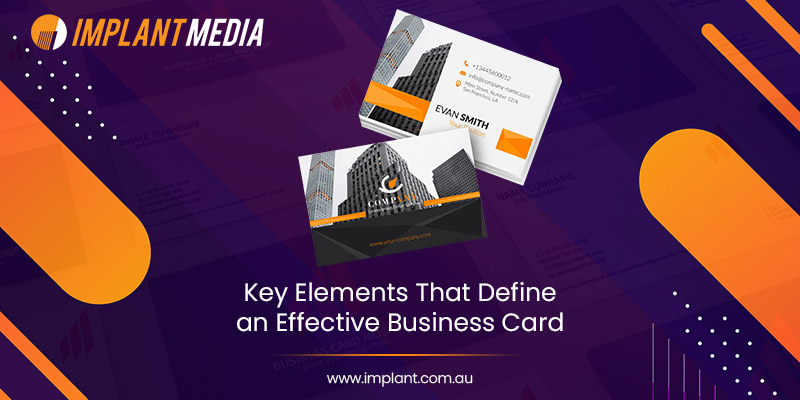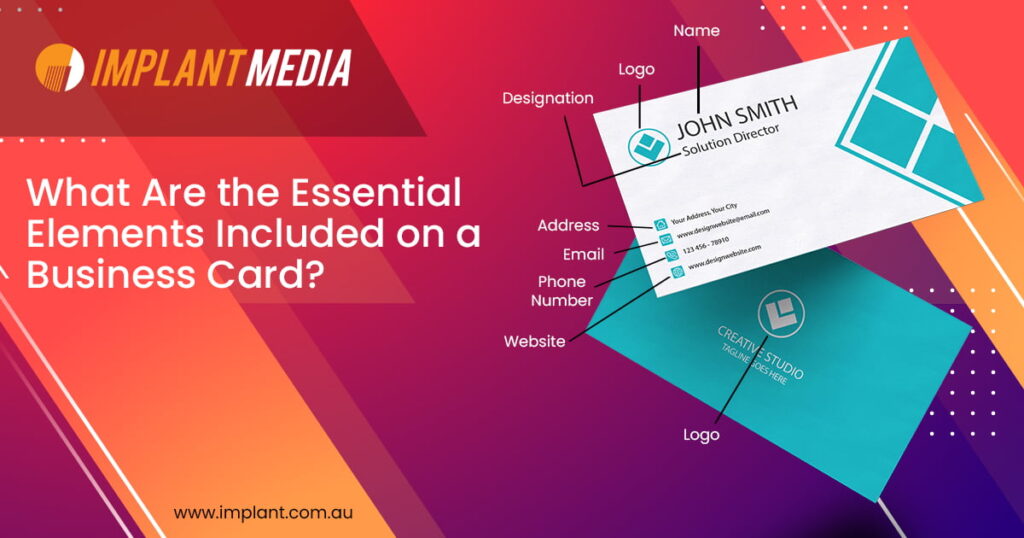In spite of the move to digital communication and networking, business cards remain highly valuable particularly in face-to-face meetings. No matter whether you are at a business expo, meeting with a prospect or having a casual professional networking, a business card is your first impression and your reputation.
But not all business cards make an impression and that is where the right things matter. A business card is not about placing your name and number on a sheet of paper but it is about designing a small, aesthetically pleasing and memorable reflection of who you are and what you do.
Let’s discuss the vital features that have to be incorporated in a professional business card.
Key Elements That Define an Effective Business Card
These are not just design decisions but they are strategic choices that affect how effectively your card communicates your identity and value.
Here is a breakdown of the essential components of a business card:

Full Name
Start with the most important thing. Your name is the most personalized on your business card. It informs the recipient about you and needs to be clearly showcased. You can even employ a font size and style such that at a quick glance, it is easy to read. Do not use abbreviations unless they are professionally known and align with your brand.
Professional Title or Role
Your title gives background to your name. Your title lets people know your duties or role in the company. Adding this assists in building credibility and clarity on your role and particularly when meeting new acquaintances who have not heard of your organization or sector.
Adding a title also assists in avoiding confusion particularly crucial in multi-disciplinary companies where occupational roles would not be clear by company name.
Business or Company Name
This is one of the most important elements that aligns your personal identity with your business brand. Whether you’re representing a startup, an established company, or working as an independent professional, the business name solidifies your connection to the organization and reinforces brand recognition.
If your business possesses a registered trademark or unique branding aesthetic, including that consistently is the best way to ensure brand integrity between printed and digital media.
Company Logo
The logo is also a visual marker on your business card elements. It is frequently the most well-known element of a brand and should be placed centrally in a position of prominence and ideally near the top, corner or center of the design business card layout.
A clear, high-resolution logo supports consistency in branding. It also provides an aesthetic value that helps add to the overall look and professional presentation of the card.
Contact Information
The most functional part of a business card is the contact section. It should be comprehensive but not cluttered. Common business card elements to include are:
- Phone number: Preferably direct or work contact.
- Email address: A professional email tied to your domain rather than a generic provider.
- Website URL: Acts as a digital extension of your brand, offering deeper insights into your services or portfolio.
All contact information should be up-to-date, clearly printed and laid out in a way that facilitates quick and easy access.
Professional Address (Optional)
Adding a business address is not mandatory and is subject to your workplace. To professionals with physical offices, studios or retail stores, this detail can prove useful.
It may also instill legitimacy and professionalism, particularly in B2B where mailing, billing or meetings are involved. But if your company is online or international, the address might not be required. Digital touchpoints are more important in those situations.
Social Media Handles
Your professional social media presence provides depth to your profile. Social handles and primarily on LinkedIn, Twitter or industry-specific websites can be used as an encouragement to engage further.
But do include social media links that are regularly updated and professionally managed. These profiles must support the same brand message as your card.
Tagline or Unique Selling Proposition
A good and concise tagline is a statement of the brand. It concisely tells you what you do, what you believe or what value you offer. The tagline is too frequently an afterthought but it has the potential to clearly distinguish your card from others.
Design and Typography
The visual design of your business card elements is as important as its content. It reflects your attention to detail and professionalism.
Key considerations in design include:
- Font style and size (legibility is non-negotiable)
- Use of white space to prevent clutter
- Alignment and spacing for visual harmony
- Color schemes that match your brand identity
Consistency with your broader brand identity like your website, emails and proposals creates a seamless experience for anyone engaging with your business.
Print Quality and Material
Even with all the right information, poor printing can compromise the effectiveness of your business card layout. The quality of the paper, the finish (matte, gloss, textured) and the ink used all contribute to perceived professionalism.
A business card printing is not just about aesthetics and it influences how your brand is physically experienced. Thick, durable cards convey stability and confidence, while flimsy cards can feel rushed or low-effort.
QR Code for Digital Engagement
Including a QR code has become increasingly popular. It bridges the gap between offline and online engagement by instantly directing the recipient to a digital destination including your portfolio, calendar booking page, Google Map location, or contact form.
This adds interactivity to your card and allows you to present far more information than can fit on a 3.5 x 2-inch piece of paper.
Final Thoughts
In a world full of quick chats and cluttered inboxes, a well-crafted business card makes a lasting impact. It is more than just contact info —it is your first impression and your silent brand ambassador.
When designed right, it becomes a gateway to future conversations, partnerships and opportunities.
Still seeing business cards as an afterthought? In 2025 and beyond, it is not just who you meet but how well they remember you.
Make your first impression unforgettable. Design and get your business cards printing with Implant Media today.


